Dehumidifiers For A Cooler Home
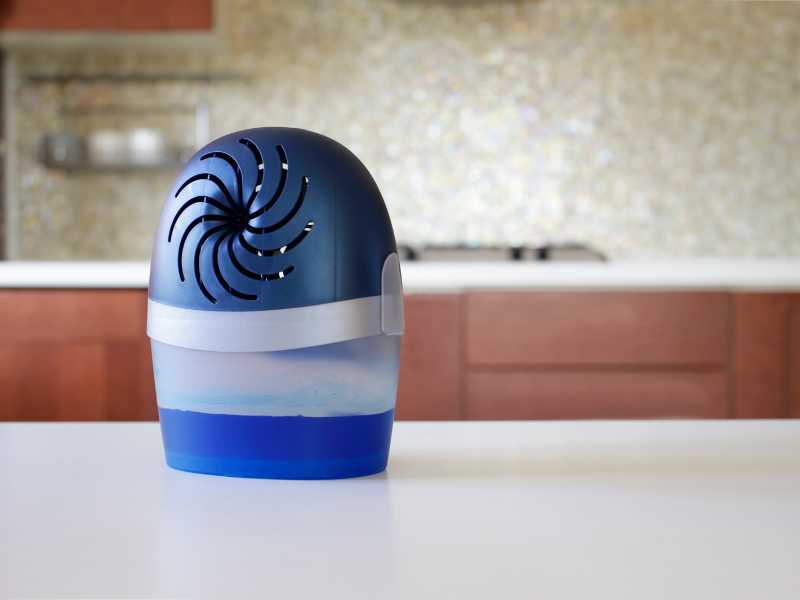
What is a Dehumidifier
A dehumidifier is a household appliance designed to reduce and maintain the level of humidity in the air, typically for comfort or health reasons, or to eliminate musty odors and prevent the growth of mildew by extracting water from the air. Dehumidifiers are used in homes, offices, and commercial spaces where moisture control is crucial. They work by drawing in moist air, cooling it to condense the water vapor, and then releasing the dried air back into the environment.
Definition and Basic Function
At its core, a dehumidifier operates by pulling humid air over cold coils, causing the moisture to condense into water droplets, which are then collected in a tank or drained away. The drier air is then reheated slightly and expelled back into the room. This process helps to lower the relative humidity, making the environment less hospitable for mold, dust mites, and other allergens.
Key Components of a Dehumidifier
The main components of a dehumidifier include:
- Compressor: Powers the unit and circulates the refrigerant through the coils.
- Refrigerant Coils: Cool the incoming air to condense the moisture.
- Fan: Draws air into the dehumidifier and pushes dry air back out.
- Water Collection Tank or Drain Hose: Collects or diverts the condensed water.
- Humidistat: Measures the room’s humidity levels and adjusts the dehumidifier’s operation accordingly.
- Filter: Traps dust and other particles from the air to prevent clogging and ensure efficient operation.
How Dehumidifiers Work to Remove Moisture from the Air
Dehumidifiers work by passing humid air over cold refrigerant coils. As the air cools, its ability to hold moisture decreases, causing the water vapor to condense into liquid form. This liquid drips into a collection tank or is directed through a drain hose. The now drier air is slightly reheated by passing over warm coils and is then released back into the room. This cycle repeats until the desired humidity level is reached, as set by the dehumidifier’s humidistat.
Why Use a Dehumidifier

Using a dehumidifier can offer numerous benefits for both health and comfort. Here are some of the primary reasons to use one:
To Reduce Humidity Levels in Homes and Offices
High humidity levels can create an uncomfortable living or working environment. Excess moisture in the air can make spaces feel warmer and more oppressive, even when temperatures are moderate. By reducing humidity, dehumidifiers help maintain a comfortable indoor climate.
To Prevent Mold and Mildew Growth in Damp Areas
Mold and mildew thrive in moist conditions, often leading to unsightly stains, structural damage, and unpleasant odors. Dehumidifiers reduce the moisture levels that mold and mildew need to grow, thus protecting your property and maintaining a healthier environment.
To Alleviate Allergies by Reducing Dust Mites and Mold Spores
Dust mites and mold spores are common allergens that can trigger respiratory issues, skin irritation, and other allergic reactions. By lowering humidity levels, dehumidifiers make it more difficult for these allergens to survive and proliferate, thereby improving indoor air quality and reducing allergy symptoms.
To Improve Air Quality and Reduce Musty Smells
Damp environments often harbor musty odors, which can be unpleasant and difficult to eliminate. Dehumidifiers help remove the excess moisture that causes these odors, resulting in fresher, cleaner-smelling air.
To Protect Furniture, Electronics, and Other Valuables from Excess Moisture
High humidity can damage furniture, electronics, and other household items by causing wood to warp, metal to rust, and electronic components to malfunction. Using a dehumidifier helps protect these valuables by maintaining optimal humidity levels and preventing moisture-related damage.
Types of Dehumidifiers
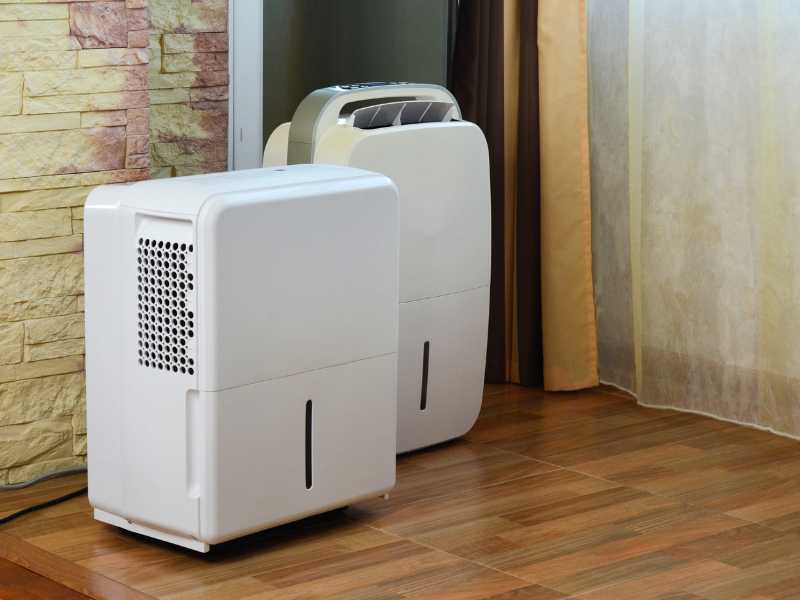
There are various types of dehumidifiers available, each suited to different environments and needs. Understanding the different types can help you choose the right dehumidifier for your specific situation.
Refrigerant (Compressor) Dehumidifiers
Refrigerant dehumidifiers, also known as compressor dehumidifiers, are the most common type. They work by using a refrigerant to cool the air, causing moisture to condense and be collected. These dehumidifiers are highly effective in warm, humid climates and are often used in basements, laundry rooms, and other areas prone to high humidity.
Best for Warm, Humid Climates
Refrigerant dehumidifiers perform best in environments where temperatures are consistently above 65°F (18°C). In these conditions, they efficiently remove large amounts of moisture from the air, helping to maintain comfortable and healthy humidity levels.
Portable Dehumidifiers for Flexible Use in Different Rooms
Portable dehumidifiers are designed for easy movement and can be used in various rooms throughout your home or office. A portable dehumidifier is ideal for targeting specific areas with high humidity, such as bedrooms, bathrooms, and kitchens, offering flexibility and convenience.
Desiccant Dehumidifiers
Desiccant dehumidifiers use a desiccant material, such as silica gel, to absorb moisture from the air. Unlike refrigerant models, they do not rely on condensation and can operate effectively in cooler temperatures. This makes them a good choice for use in unheated spaces like garages, attics, and basements.
Better for Cooler, Less Humid Environments
Desiccant dehumidifiers are particularly effective in cooler climates and environments where traditional refrigerant dehumidifiers may struggle. They are also quieter and lighter, making them easier to move and operate in various settings.
Whole-House Dehumidifiers for Larger Spaces
Whole-house dehumidifiers are integrated into a home’s HVAC system and are designed to control humidity throughout the entire house. These units are ideal for larger homes or buildings where consistent humidity control is needed across multiple rooms and floors.
Energy Star Dehumidifiers for Efficient Energy Consumption
Energy Star certified dehumidifiers are designed to use less energy while maintaining high performance. These models meet strict energy efficiency guidelines set by the U.S. Environmental Protection Agency, helping you save on energy bills while reducing your environmental impact.
How to Choose a Dehumidifier
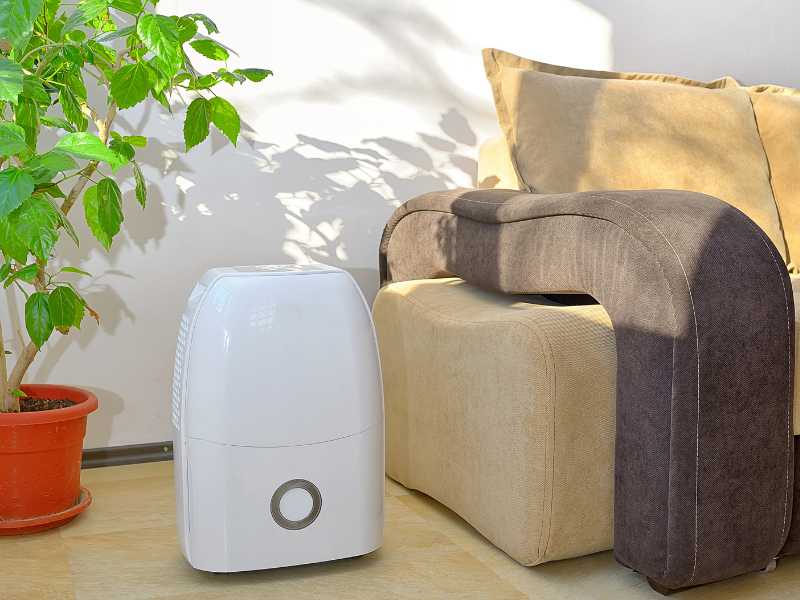
Selecting the right dehumidifier involves considering several factors to ensure it meets your specific needs. Here are some key aspects to keep in mind:
Consider Room Size and Humidity Level
The size of the room and the existing humidity level are crucial in determining the appropriate dehumidifier capacity. Dehumidifiers are rated by the amount of moisture they can remove in 24 hours. The amount is typically measured in pints. For small rooms or spaces with moderate humidity, a lower-capacity unit may suffice. Larger areas or spaces with high humidity will require a higher-capacity dehumidifier model.
Measure the Square Footage and Assess Dampness
To choose the right dehumidifier, measure the square footage of the room you intend to use it in. Additionally, assess the dampness level:
- Slightly Damp: Musty odors occur occasionally, especially in humid weather.
- Moderately Damp: Musty odors are noticeable, and damp spots may appear on walls and floors.
- Very Damp: Walls or floors are often damp, and mold may be visible.
- Wet: Standing water or continuously wet areas.
Check for Energy Efficiency Ratings
Energy efficiency is an important consideration for reducing electricity costs and environmental impact. Look for dehumidifiers with high energy efficiency ratings, which indicate they use less electricity to remove the same amount of moisture.
Look for Energy Star Certified Models
Energy Star certified dehumidifiers meet strict energy efficiency guidelines set by the U.S. Environmental Protection Agency. These models not only reduce energy consumption but also help you save on utility bills without compromising performance.
Evaluate Noise Levels for Living Spaces
Noise levels can be a significant factor, especially if the dehumidifier will be used in living areas or bedrooms. Quieter models are preferable for maintaining a peaceful environment. Check the decibel (dB) rating to compare noise levels; lower numbers indicate quieter operation.
Quieter Models are Preferable for Bedrooms and Offices
For spaces where quiet is essential, such as bedrooms and offices, choose dehumidifiers specifically designed for low noise output. These models operate at noise levels similar to a normal conversation, ensuring minimal disruption.
Consider Additional Features Like Automatic Shutoff and Built-In Humidistat
Modern dehumidifiers come with various features that enhance convenience and performance:
- Automatic Shutoff: Turns off the unit when the water tank is full to prevent overflow.
- Built-In Humidistat: The built-in humidistat allows you to set the desired humidity level, and the dehumidifier will automatically maintain it.
- Continuous Drain Feature: Enables continuous drainage using a garden hose or drain pump, eliminating the need to empty the water tank manually.
- Frost Control Sensor: Prevents frost buildup on the coils, which can affect performance.
- Wi-Fi Connectivity: Some models of modern dehumidifiers offer remote air quality monitoring and control through smartphone apps.
Assess the Need for Continuous Drain Feature or Condensate Pump
If you prefer not to empty the water tank frequently, look for models with a continuous drain feature or a built-in condensate pump. These options allow for continuous drainage, making maintenance easier, especially in very damp environments.
Examine Fan Speed Options for Air Circulation
Different fan speed settings can help optimize air circulation and dehumidification efficiency. Higher speeds can be useful for rapid moisture removal, while lower speeds can maintain a quieter operation in living spaces.
Maintenance of Dehumidifiers
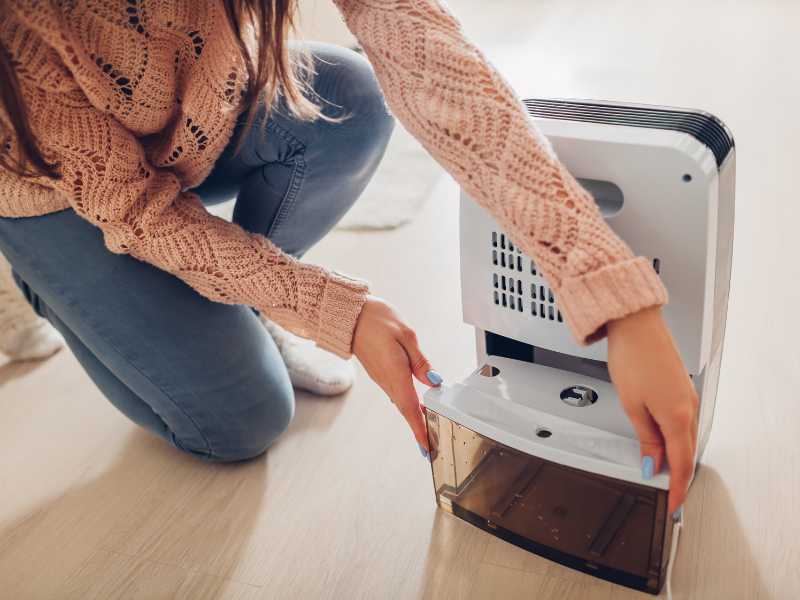
Proper maintenance ensures your dehumidifier operates efficiently and lasts longer. Regular care can also prevent common issues and improve indoor air quality.
Regularly Empty the Water Tank to Prevent Overflow
Most dehumidifiers have a water collection tank that needs to be emptied regularly to prevent overflow. Depending on the humidity level and the dehumidifier’s capacity, you may need to do this daily or every few days. For convenience, consider models with an indicator light that alerts you when the tank is full.
Clean the Air Filter Monthly to Maintain Efficiency
Dehumidifiers have air filters that trap dust and other particles. To keep the unit running efficiently, clean the filter at least once a month. Some models have washable filters, while others may need replacement filters. Regular cleaning prevents dust buildup, which can obstruct airflow and reduce performance.
Check for Leaks and Unusual Noises as Signs of Malfunction
Regularly inspect your dehumidifier for any signs of leaks, which can indicate issues with the water collection system or drain hose. Unusual noises, such as rattling or humming, can signal mechanical problems or blocked airflow. Addressing these issues promptly can prevent further damage and ensure the unit functions correctly.
Inspect the Frost Control Sensor for Proper Function
In colder environments, frost can build up on the dehumidifier’s coils, affecting its performance. Regularly check the frost control sensor to ensure it is functioning correctly. If the sensor fails, frost buildup can lead to reduced efficiency and potential damage to the unit.
Ensure the Drain Hose or Floor Drain is Clear and Functional
For models with continuous drain features, make sure the drain hose or floor drain is clear and free of obstructions. Regularly inspect the hose for kinks or blockages that could impede water flow and cause backups.
Perform Routine Checks on the Dehumidifier’s Air Quality Output
Monitor the air quality output of your dehumidifier to ensure it is effectively reducing humidity levels. Use a hygrometer to measure the room’s humidity and adjust the dehumidifier settings as needed to maintain the desired level. Consistent air quality checks help ensure the unit is operating at peak efficiency.
Common Problems with Dehumidifiers

While dehumidifiers are generally reliable, they can encounter issues that affect their performance. Here are some common problems and their potential solutions:
Not Collecting Water Due to Incorrect Settings or Full Tank
If your dehumidifier is not collecting water, first check the settings. Ensure the desired humidity level is set correctly and the unit is positioned in a suitable location. Additionally, check if the water tank is full; most dehumidifiers have an automatic shutoff feature when the tank is full. Emptying the tank should resolve the issue.
Overheating from Blocked Airflows or Mechanical Issues
Overheating can occur if the dehumidifier’s airflow is obstructed or if there are mechanical problems. Ensure the unit is placed in an area with adequate ventilation and that the air filter is clean. If the dehumidifier continues to overheat, it may require professional inspection to identify and fix any mechanical issues.
Making Loud Noises Indicating a Need for Maintenance or Repair
Loud or unusual noises, such as rattling or buzzing, often indicate that the dehumidifier needs maintenance or repair. These noises can be caused by loose parts, a clogged filter, or issues with the fan or compressor. Inspect the unit for any visible problems and clean the filter. If the noise persists, consult the user manual or contact a professional for further assistance.
Frequent Cycling On and Off or Tripping Hazard Issues
Frequent cycling on and off can indicate issues with the humidistat or electrical components. Ensure the dehumidifier is set to the correct humidity level and that the power supply is stable. If the problem continues, it may be necessary to have the unit inspected and repaired by a professional. Additionally, ensure that the dehumidifier is placed in a safe location to avoid tripping hazards and accidental damage.
Frost Build-Up on Coils Affecting Performance
Frost build-up on the coils can reduce the dehumidifier’s efficiency. This issue is common in cooler environments. Regularly check the frost control sensor and defrost the unit if necessary. Some dehumidifiers have an automatic defrost feature to prevent frost accumulation. If frost build-up persists, consider using a desiccant dehumidifier, which is better suited for cooler temperatures.
When to Replace a Dehumidifier
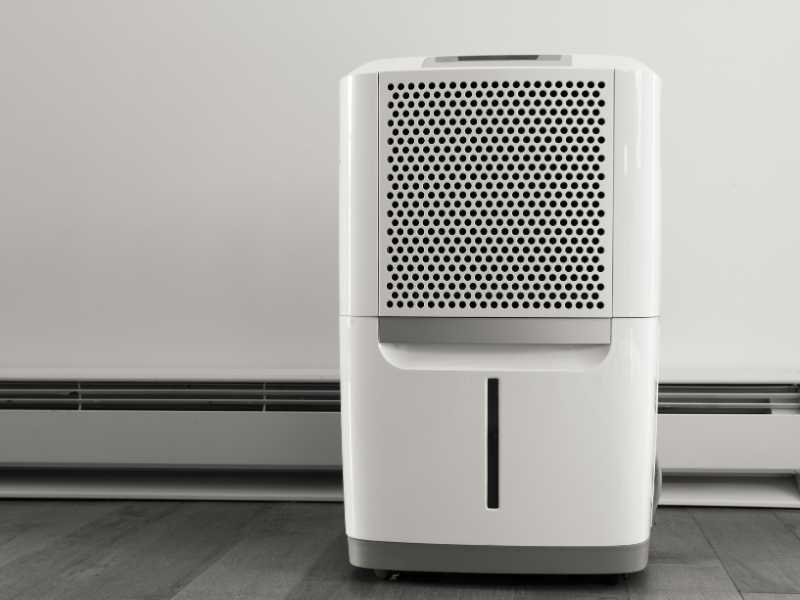
Knowing when to replace your dehumidifier ensures you maintain an effective and efficient unit, ultimately improving air quality and reducing energy consumption. Here are some guidelines to help you determine the right time for a replacement:
After 3-5 Years of Use or When Performance Declines
Most dehumidifiers are designed to last between three to five years with regular use. If you notice a decline in performance, such as reduced moisture removal or increased noise levels, it may be time to consider a replacement. Over time, wear and tear can impact the efficiency and effectiveness of the unit.
If Repair Costs Exceed Half the Price of a New One
When faced with significant repairs, compare the cost of repairs to the price of a new dehumidifier. If repair expenses exceed half the cost of a new unit, investing in a new, more energy-efficient model might be more cost-effective.
Consider Upgrading for More Energy-Efficient Models
Advancements in technology have led to the development of more energy-efficient dehumidifiers. Upgrading to an Energy Star certified model can reduce energy consumption and lower utility bills. Newer models often come with additional features, such as Wi-Fi connectivity, automatic shutoff, and enhanced humidity control.
Signs of Wear and Tear that Impact Efficiency and Safety
Visible signs of wear and tear, such as rust, cracks, or damaged components, can affect the dehumidifier’s efficiency and safety. If the unit shows significant signs of deterioration, replacing it with a new model is advisable.
Availability of Newer Models with Advanced Features
Modern dehumidifiers offer various advanced features that improve convenience and performance. Features like built-in humidistats, continuous drain options, and frost control sensors enhance the user experience and efficiency. Upgrading to a newer model with these features can provide better moisture control and air quality.
Most Efficient Dehumidifiers in 2024
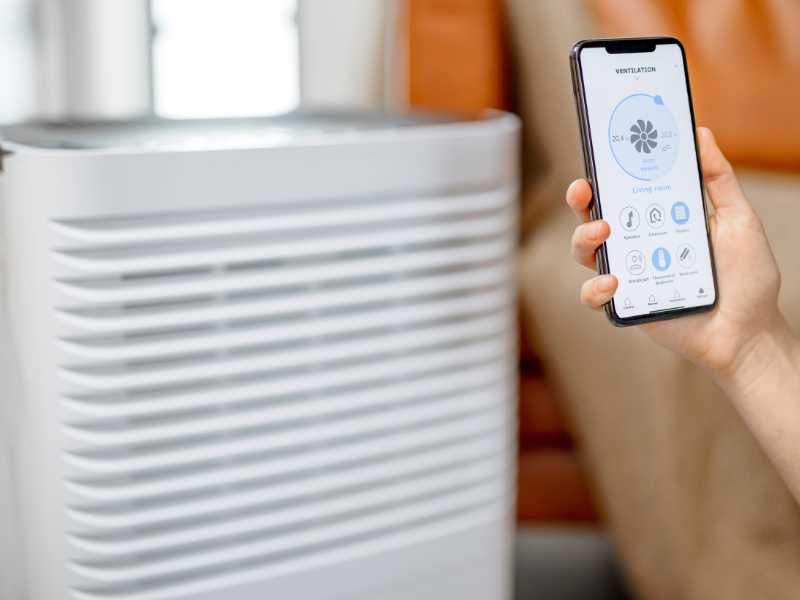
When looking for the most efficient dehumidifiers in 2024, consider models that offer a balance of performance, energy efficiency, and user-friendly features. Here are some aspects to keep in mind:
What Should I Look for When Buying a Dehumidifier?
When purchasing a dehumidifier, consider the following factors:
- Capacity: Match the unit’s capacity to the size of the room and the level of humidity.
- Energy Efficiency: Look for models with high energy efficiency ratings to save on electricity costs.
- Noise Level: Choose quieter models for bedrooms, living rooms, and offices.
- Features: Consider additional features like automatic shutoff, built-in humidistat, and continuous drain options.
- Brand Reputation: Opt for reputable brands known for quality and reliability.
Be Sure to Look for the ENERGY STAR When Shopping for Dehumidifiers
ENERGY STAR certified dehumidifiers meet strict energy efficiency guidelines set by the U.S. Environmental Protection Agency. These models use less energy, helping you save on utility bills while reducing your environmental footprint.
Top-Rated Models for 2024 and Their Features
In 2024, several top-rated dehumidifiers stand out for their efficiency and features:
- Model A: Known for its high capacity and quiet operation, suitable for large spaces.
- Model B: Features a built-in humidistat and Wi-Fi connectivity for remote control.
- Model C: Offers a continuous drain feature and frost control sensor, ideal for cooler environments.
- Model D: Compact and portable, perfect for small spaces and ease of movement.
Comparing Energy Consumption and Performance Metrics
When evaluating dehumidifiers, compare their energy consumption and performance metrics. Look for models with lower energy usage per pint of moisture removed. Energy Star models typically provide detailed information on their energy efficiency and performance, making it easier to compare options.
Why ENERGY STAR?
Choosing ENERGY STAR certified dehumidifiers offers numerous benefits, including:
Benefits of ENERGY STAR Certified Dehumidifiers
ENERGY STAR certified dehumidifiers are designed to use less energy while maintaining high performance. These units help reduce greenhouse gas emissions and lower energy bills. They are tested for reliability and efficiency, ensuring you get a product that performs well and lasts longer.
How ENERGY STAR Models Reduce Energy Bills
ENERGY STAR models use advanced technology to remove moisture more efficiently, reducing the energy required for operation. This efficiency translates to lower electricity bills over the dehumidifier’s lifespan, providing significant cost savings.
Environmental Impact of Using Energy-Efficient Appliances
Using energy-efficient appliances like ENERGY STAR certified dehumidifiers helps reduce your carbon footprint. These models contribute to lower energy consumption, reducing the demand for power plants and decreasing greenhouse gas emissions. By choosing ENERGY STAR products, you support environmental sustainability and conservation efforts.
Saving Tips
Maximizing the efficiency of your dehumidifier can further reduce energy consumption and costs. Here are some practical saving tips:
Best Practices
Follow these best practices to ensure your dehumidifier operates efficiently:
- Optimal Settings for Different Seasons and Climates: Adjust the humidity settings based on the season and local climate. In summer, set the humidity level lower to combat higher moisture levels.
- Efficient Use of Dehumidifiers in Conjunction with Air Conditioning: Use your dehumidifier alongside your air conditioning system to maintain a comfortable indoor environment. This combination can improve overall air quality and reduce the load on your AC unit.
- Proper Placement in Rooms for Maximum Efficiency: Place the dehumidifier in a central location where airflow is not obstructed. Avoid placing it near walls, furniture, or curtains that can block the intake and exhaust.
- Using Dehumidifiers in Conjunction with Fans for Better Air Circulation: Enhance air circulation by using fans along with your dehumidifier. This helps distribute dry air more evenly throughout the room.
- Monitoring and Maintaining Desired Humidity Levels with a Built-In Humidistat: Use the built-in humidistat to maintain consistent humidity levels. Set the desired humidity level and let the dehumidifier automatically adjust its operation to achieve it.
Frequently Asked Questions About Dehumidifiers
1. How does a dehumidifier work in removing moisture from the air?
A dehumidifier works by drawing in humid air and passing it over cold coils, which condenses the moisture into water droplets. These droplets are then collected in a tank or expelled through a drain hose, while the dry air is reheated and released back into the room. This process effectively reduces the humidity levels, improving air quality and comfort.
2. What is the best dehumidifier for a humid climate?
The best dehumidifiers for humid climates are typically high-capacity, Energy Star certified models designed to handle large amounts of moisture. These models often feature drain pumps or continuous drain options to handle the frequent emptying required in humid conditions.
3. How often will I need to empty the water bucket in my dehumidifier?
The frequency of emptying the water bucket depends on the dehumidifier’s capacity and the humidity level in the room. In very humid conditions, the bucket fills more quickly, often requiring daily emptying. Models with a continuous drain feature or drain pumps can help reduce the need for frequent emptying.
4. Can I drain my dehumidifier directly into a sump pump?
Yes, many dehumidifiers have a hose connection that allows you to drain directly into a sump pump. This setup is especially useful in basements or areas where continuous drainage is necessary to manage high humidity levels effectively.
5. What size dehumidifier do I need for my space?
To determine the appropriate size dehumidifier, measure the square feet of the space and assess the humidity level. For example, a 1,000 square foot area with moderate dampness may require a 30-pint dehumidifier, while the same size space with high humidity might need a 50-pint model.
6. How does a dehumidifier help prevent mold growth?
A dehumidifier helps prevent mold growth by reducing the moisture levels in the air. Mold thrives in damp environments, so by maintaining a lower humidity level, typically below 60%, you can inhibit mold spores from growing and spreading.
7. Why does my dehumidifier have a musty smell?
A musty smell from a dehumidifier could indicate mold growth within the unit or a full bucket of stagnant water. Regular cleaning of the water tank and air filter, as well as ensuring the unit is properly draining, can help prevent musty odors.
8. Are there dehumidifiers suitable for smaller spaces?
Yes, there are physically smaller dehumidifiers designed specifically for smaller spaces such as bathrooms, closets, and small bedrooms. These compact models are efficient at removing moisture from smaller areas and often include features like auto restart and splash guards for convenience.
9. What is the target humidity level I should set on my dehumidifier?
The target humidity level for a comfortable indoor environment is typically between 30% and 50%. Setting your dehumidifier based on this range can help maintain optimal air quality and prevent issues related to excess moisture.
10. How does the auto restart feature work on a dehumidifier?
The auto restart feature allows a dehumidifier to automatically turn back on and resume operation after a power outage, maintaining the set humidity level without the need for manual intervention. This feature is particularly useful for maintaining consistent humidity control in areas prone to power interruptions.
Improve Your Air Quality with Callidus Air
Ready to take control of your indoor air quality? Callidus Air is here to help! Our expert HVAC services ensure your home remains comfortable and free from excess moisture. Serving Las Vegas, NV, and surrounding areas like Henderson, Summerlin, and Paradise, we specialize in providing energy-efficient solutions for all your heating and cooling needs.
